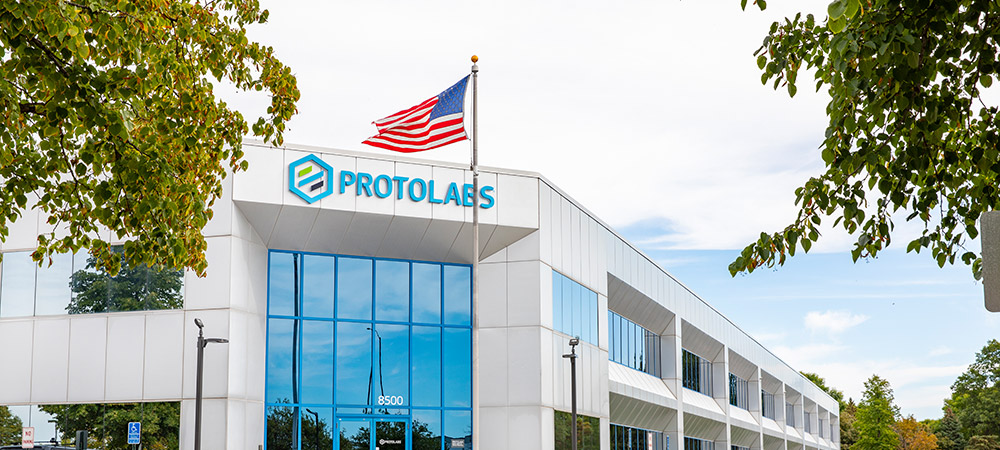How Onshoring is Transforming the Global Supply Chain

The world of manufacturing is evolving, and in 2024, disruptive trends like onshoring and nearshoring are at the forefront of global supply chain transformation. To understand why these concepts are so important to the overall landscape, let's first start by defining them.
Onshoring: the process of sourcing or relocating a business' manufacturing operations within domestic national borders.
Reshoring: the process of returning the manufacturing of goods back to the company's original country.
Nearshoring: the process of transferring a business operation to a nearby country, especially in preference to a more distant one.
Friendshoring/ally shoring: the process by which countries rework critical supply chains and source essential materials, goods, and services among and between trusted partners and allies.
These strategies are no longer fleeting trends or buzzwords. They represent significant shifts in how companies manage their supply chains to mitigate risk and build resilience against unpredictable market forces. Let's explore what these strategies mean for product developers, and how they're shaping the future of global manufacturing.

Protolabs' digital manufacturing model provides both onshore and nearshore solutions.
Recent Events Forcing Change in Global Supply Chains
It's no secret that recent supply chain disruptions, black swan events, and geopolitical tensions have exposed vulnerabilities in traditional supply chains. Companies that once relied heavily on distant suppliers, often in the lowest cost countries, are now rethinking their strategies to find, or create, supply safe havens near where a product will be consumed.
Onshoring and reshoring can offer significant benefits, most notably through faster reaction time, better control of production processes, improved quality standards, and even freight cost and lead time improvement with the elimination of cross-border transport.
But onshoring and reshoring aren't the only strategies on the table to manufacture products closer to the point of consumption. Nearshoring has also gained traction as companies move production to friendly neighbors, often achieving cost reduction while improving supply chain stability. For American companies, this might mean shifting segments of manufacturing operations to Central America, cutting transportation cost and lead time while maintaining relative proximity to the U.S. market.
Geopolitical factors of course are a significant driver behind these shifts as the global supply chain grapples with rising competitive tension between major economies. Controllable considerations such as cost, quality, and speed to market are also crucial.
A comprehensive strategy, inclusive of onshoring and nearshoring, strikes a balance between cost efficiency, geographic proximity, and speed, making it an attractive alternative for the product developers who have ridden waves of supply uncertainty since the onset of the COVID-19 pandemic.
Manufacturing's Technological Evolution and the Sourcing Challenge
Supply chain strategy becomes deeply rooted over time and is often difficult to change, unless that change is forced by disruptive variables. And this makes sense—why fix it if it isn't broken?
Pre-2020, there wasn't a pressing emergency that threatened, or even really tested the global supply chain in a meaningful way for some time. It wasn't until cracks began to appear in the wake of the pandemic-fueled freight and materials shortages that companies were really forced to take a hard look at supply, this time with major, sometimes existential, motivation to reinforce weak spots and begin looking for alternative sources. That's when the magnitude of the challenge became clearer—it's difficult, time consuming, and costly to change suppliers.
In fact, doing this on a large scale and uprooting or relocating large portions of a manufacturing supply chain via traditional means might take years or more. Vetting processes, contractual negotiations, as well as costly and prolonged onboarding all make for a drawn-out process with unpredictable ROI.
Fortunately, American manufacturing's technological evolution has prepared our industry for a potential sea change in sourcing strategies increasing supply chain agility.
Digital manufacturing has embraced industry 4.0 innovations to advance analytics, artificial intelligence/machine learning, and manufacturing automation as compounded technological advancement increases. Adoption of these technologies will only skyrocket as data, cost, and reliability continue to improve.
This means that traditional and analog processes, which have long been the norm, are quickly being overhauled or replaced by their data drive digital cousins, opening new frontiers of possibility, and creating an opportunity and openness to reexamine things like geographic locale.
Historically, time and cost have been the most significant challenges faced by companies aiming to reorganize their supply chains, let alone reshore them or nearshore to the less mature manufacturing regions. Digital manufacturing aims to change that.
Why Digital Manufacturing is Key to Successful Onshoring and Nearshoring
Protolabs' unique manufacturing model greatly reduces the sources challenge, especially for companies looking to set roots domestically or nearshore.
Product developers can choose to manufacture entirely domestically through our wholly owned factories, or access domestic and nearshore manufacturing partners to suit their needs through Protolabs Network. Working with a single supplier, product developers now have unprecedented flexibility to onshore or nearshore supply chains—without the traditional barriers and risk of investing valuable time and resources into the sourcing, vetting, and management of a new supply base. That's all done by Protolabs.
But mitigating the sourcing challenge isn't the only benefit—the digital model also creates new opportunities to optimize for independent variables like speed, quality, or cost within a single supply framework, and do that while onshoring or nearshoring.
By embracing a digital model, supply chain flexibility is now accessible throughout the manufacturing process. Seems too good to be true? Just ask our customers—they're doing it every day.








